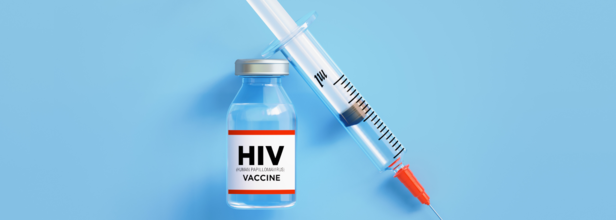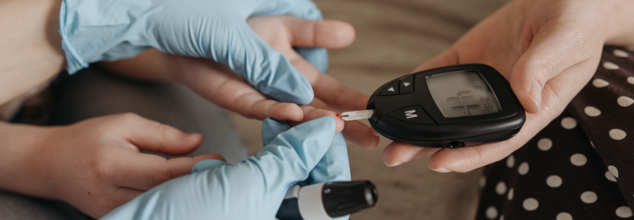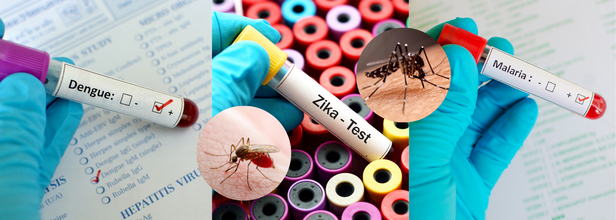- Health Conditions A-Z
- Health & Wellness
- Nutrition
- Fitness
- Health News
- Ayurveda
- Videos
- Medicine A-Z
- Parenting
- Web Stories
What Role Does Naturopathy Play In General Healing?

Credits: Canva
As times are changing, all of us are going back to traditional approaches, whether it is Ayurveda, Homoeopathy or Naturopathy. These are alternative medicines and are useful in treating many diseases, especially through lifestyle changes. Most of these alternative medicines focus on preventive care. Today, we try to find out what one might be in for when they choose Naturopathy as a way of healing. What does it do? How does it differ from Ayurveda? How can it complement the regular day-to-day modern medicines?
For this, the Health and Me team spoke to Dr Prashanth Shetty, Principal at SDM College of Naturopathy and Yogic Science, Ujire.
What Is Naturopathy?
As the doctor explains, Naturopathy is a holistic approach to medicine that believes in the body’s innate ability to heal itself. It focuses on the root cause of illnesses, not just symptoms, and promotes natural healing through diet, lifestyle modifications, herbal remedies, hydrotherapy, and physical therapy.
"Naturopathy emphasizes natural healing, disease prevention, and lifestyle modification, aiming to restore balance and promote long-term wellness,” says Dr Shetty.
Unlike allopathic medicine, which often relies on pharmaceuticals and surgeries to treat disease symptoms, naturopathy works by supporting the body’s self-healing process.
How Does Naturopathy Complement Modern Medicine?
Naturopathy is increasingly being integrated with modern medical practices. It works well as a complementary therapy, especially in managing chronic conditions. For instance, naturopathic therapies such as acupuncture and nutrition counselling can reduce side effects of medications or improve treatment outcomes.
Patients undergoing treatment for diabetes, hypertension, arthritis, or even cancer may benefit from a combined approach—using conventional medications alongside naturopathic suggestions on diet, exercise, and stress reduction. This not only reduces dependency on medication but also empowers patients to actively participate in their healing journey.
Can It Help With Chronic Conditions?
Dr Shetty points out instances where Naturopathy has helped patients who have been battling with chronic diseases:
Diabetes: Naturopathic approaches like dietary changes, herbal supplements, and stress management can complement conventional treatments.
Hypertension: Lifestyle modifications, such as diet, exercise, and stress reduction, can be used alongside medication to manage blood pressure.
Arthritis: Naturopathic treatments like acupuncture, herbal remedies, and physical therapy can help manage pain and inflammation.
Mental Health
Anxiety and Depression: Naturopathic approaches like mindfulness, meditation, and herbal supplements can be used alongside conventional treatments.
Stress Management: Naturopathic techniques like yoga, deep breathing, and relaxation can help manage stress.
Digestive Health
Irritable Bowel Syndrome (IBS): Naturopathic approaches like dietary changes, probiotics, and stress management can help manage symptoms.
Inflammatory Bowel Disease (IBD): Naturopathic treatments like dietary modifications, herbal supplements, and stress reduction can complement conventional treatments.
Women's Health
Menstrual Disorders: Naturopathic approaches like herbal supplements, dietary changes, and stress management can help regulate menstrual cycles.
Menopause: Naturopathic treatments like herbal supplements, dietary changes, and lifestyle modifications can help manage symptoms.
Naturopathy vs Ayurveda: Are They the Same?
Though both systems promote natural healing, they are fundamentally different. “Naturopathy and Ayurveda are not the same—they are distinct systems of natural medicine with different foundations and limitations,” says Dr Shetty.
Naturopathy is grounded in the belief of self-healing through nature, whereas Ayurveda is rooted in the concept of balancing the body's three doshas—Vata, Pitta, and Kapha. Naturopathy commonly uses diet, hydrotherapy, and herbal medicines, while Ayurveda may include massages, herbal formulations, and treatments based on dosha types.
Additionally, naturopathic education is often structured and formalized, while Ayurvedic learning can also be passed down traditionally through apprenticeships.
While both the systems do share certain similarities—like emphasizing prevention, detoxification, and the use of herbal remedies; they follow a different framework and diagnostic methods. Naturopathy focuses more on individual's lifestyle and the environmental factors, whereas Ayurveda relies more on the ancient texts and doshic assessments, points out the doctor.
Personalized and Preventive
What makes naturopathy stand out is that it is personalized in nature and is based on each individual's lifestyle, their dietary habits, what suits them and what does not and their stress levels. It also evaluates emotional well-being, as well as the environment that may be the cause of their diseases or disorders.
At the core of naturopathy is prevention. It focuses more on preventing a disease even before the symptoms show up. By encouraging early lifestyle interventions, regular detoxification, and stress management, naturopathy helps reduce disease incidence, hospital visits, and the long-term burden on healthcare systems.
Reducing Healthcare Burden
There is an overgrowing burden on the healthcare system. While it is not to say that this must not be changed however, with alternative medicines like naturopathy, which emphasizes on preventive care, it can help lessen the burden. Naturopathy also focuses on educating individuals to take control of their health. The approaches used are: balanced nutrition, exercise, and mindfulness. As Dr Shetty notes, this not only empowers patients but also reduces the reliance on medication and minimizes hospital visits—ultimately easing the strain on healthcare infrastructure.
HIV Vaccine Research In South Africa Crumbles As U.S. Pulls Funding

Credits: Canva
Just one week before a landmark HIV vaccine trial was set to begin in South Africa, researchers received devastating news: the United States government was withdrawing its funding. The message—abrupt and brief—ordered a halt to all work.
The decision, made under the Trump administration, pulled $46 million in funding for a major research project called BRILLIANT, leaving scientists and healthcare professionals in one of the world’s hardest-hit regions scrambling to keep their work alive. South Africa carries one of the highest burdens of HIV globally, and the clinical trials were seen as a significant opportunity to turn the tide.
A Major Setback for Global HIV Efforts
The research project aimed to develop an HIV vaccine tailored to the region’s unique viral strains and genetic diversity, with hopes of benefiting populations worldwide. Instead, the project has ground to a halt.
According to Associated Press reporting, the funding cut was part of a larger move to reduce U.S. foreign aid, with former President Donald Trump shifting focus to domestic priorities. The Trump administration also cited unfounded claims about the persecution of South Africa's white Afrikaner minority, contributing to the decision to withdraw broader aid.
As a result, USAID and the President’s Emergency Plan for AIDS Relief (PEPFAR)—which had provided approximately $400 million annually to South Africa—have scaled back significantly. The consequences, experts warn, could be catastrophic not only for South Africa but for global HIV prevention.
Scientists Warn of Long-Term Damage
Dr. Glenda Gray, head of the BRILLIANT program, called the move a severe blow to scientific progress. “We do the trials better, faster and cheaper than anywhere else in the world,” she told AP. “Without South Africa as part of these programs, the world is much poorer.”
South African scientists have long played an essential role in global health research. During the COVID-19 pandemic, they were pivotal in testing vaccines like Johnson & Johnson and Novavax, and their genomic surveillance identified a major variant of concern. They have also contributed to clinical trials for lenacapavir, the world’s only twice-a-year HIV prevention shot recently approved by the U.S. FDA.
Jobs Lost, Lives Disrupted
At the University of the Witwatersrand, lab technician Nozipho Mlotshwa is one of many researchers whose future is uncertain. Her job, funded through a research grant, now hangs in the balance. “It’s very sad and devastating,” she said. “We’ll also miss out collaborating with other scientists across the continent.”
According to South Africa’s health department, at least 100 HIV researchers have already lost their jobs, and funding for postdoctoral students is at risk. Across the country, 8,000 health workers in the HIV program have been laid off. These include data collectors who monitored patient progress and HIV counselors who worked in remote areas.
Looming Health Crisis
Professor Abdullah Ely, who leads one of the vaccine development teams, said early trial data was promising, showing positive immune responses. But all progress has now stalled. “That momentum has all kind of had to come to a halt,” he said.
The South African government has warned that replacing the lost U.S. funding will be extremely difficult. An umbrella body for the country’s universities, Universities South Africa, has requested over $110 million from the national treasury to sustain vital health research—but even that may not be enough.
A Wider Regional Impact
UNAIDS executive director Winnie Byanyima visited South Africa in June and voiced deep concern over the future of HIV care and research, not only in South Africa but across the continent. Countries like Nigeria, Zambia, Burundi, and Ivory Coast are now trying to increase their own HIV resources.
“But let’s be clear,” she said. “What they are putting down will not be funding in the same way that the American resources were funding.”
Without swift action to replace the lost support, millions of lives could be at risk. The United Nations has warned that if funding gaps aren’t filled, millions may die by 2029 from diseases that could have been prevented.
This Three-Step Test Could Spot Early Signs of Diabetes - Here's How It Is Conducted

(Credit-Canva)
Diabetes is a huge global problem, causing serious health issues like blindness and heart attacks. Numbers are soaring, with many untreated. According to the World Health Organization, cases soared from 200 million in 1990 to 830 million in 2022. It causes serious issues like blindness and heart attacks. Many go untreated and the best approach is preventing it by knowing your risk.
Diabetes UK offers a simple online test to help you understand your risk of developing type 2 diabetes over the next ten years. This tool not only gives you an idea of your risk but also provides advice on what steps to take next, from continuing your healthy habits to contacting your doctor for more checks.
Understanding Your Risk: Why It Matters
The charity warns that you can have type 2 diabetes for years without even knowing it. More than 3.2 million people in the UK are currently at risk due to their blood sugar levels. To take the test, you need to be over 18 and not pregnant. The test requires some basic information like your waist size, height, and weight to be accurate. This quick, seven-question survey also considers your age, ethnic background, and family health history.
What Your Risk Category Means
The online test places people into one of four risk groups: low, medium, high, or very high. Here's what those categories mean for your chances of being diagnosed with type 2 diabetes in the next decade:
Very High Risk: You have a 1 in 4 (25%) chance.
High Risk: You have a 1 in 10 (10%) chance.
Medium Risk: You have a 1 in 35 (2.8%) chance.
Low Risk: You have a 1 in 100 (1%) chance.
If you're in the 'very high risk' category, the test will suggest you get a blood test from your GP and ask about support to lower your risk. Diabetes UK can also email your results and advice, including a letter you can show your doctor.
Factors Influencing Your Risk Score
The test considers things you can't control, like your ethnicity, age, and height. However, it also highlights the importance of your waist size and BMI (Body Mass Index) in lowering your risk. For instance:
- A waist size over 110cm automatically adds nine points to your score, putting you in the medium risk category even before other factors are considered.
- A waist size under 90cm adds no points.
- Similarly, a BMI of 35 or higher adds eight points, enough to place you in the medium risk category.
- A BMI below 25 adds no points.
Preventing Type 2 Diabetes
Unlike type 1 diabetes, type 2 diabetes is often preventable. Studies have shown that making changes to your lifestyle can actually halve your risk. Effective ways to prevent it include eating a balanced diet, exercising regularly, and managing your weight if needed.
Experts advise, "It's important to keep checking your risk regularly, especially if anything changes, like if you've put on weight or feel unwell." It's also important to be aware of the symptoms of diabetes, especially if you have a higher risk due to your age, ethnic background, or family history. These symptoms include:
- Urinating more often than usual
- Feeling very thirsty
- Feeling unusually tired
- Losing weight without trying
- Genital thrush (a yeast infection)
- Cuts and wounds that heal slowly
- Blurred vision
- Feeling more hungry than usual
WHO Releases First-Ever Clinical Guidelines For Arboviral Diseases Amid Rising Global Threat

Credits: Canva
In a landmark move to strengthen global preparedness and response to mosquito-borne illnesses, the World Health Organization (WHO) has released its first-ever integrated clinical guidelines for the management of arboviral diseases. These include some of the most common and dangerous viruses transmitted by mosquitoes — dengue, chikungunya, Zika, and yellow fever.
The guidelines, published earlier this month, aim to provide frontline healthcare workers, hospitals, and policymakers with evidence-based, standardized protocols to treat both mild and severe cases. With arboviral diseases rapidly expanding in reach and impact, particularly in tropical and subtropical regions, WHO hopes these clinical tools will help reduce mortality and morbidity rates.
What Are Arboviral Diseases?
Arboviral diseases are viral infections transmitted by arthropods, mainly mosquitoes — especially the Aedes aegypti species. This single vector can carry and transmit multiple viruses at once, which makes controlling outbreaks even more challenging.
According to WHO, over 5.6 billion people — more than half of the global population — are at risk of contracting arboviral infections. These diseases often start with non-specific, flu-like symptoms such as fever, rash, and joint pain, making accurate diagnosis difficult without laboratory confirmation. However, they can lead to severe complications, including hemorrhage, neurological damage, or organ failure, if left untreated or mismanaged.
Why the Guidelines Are Critical Now
In a statement, WHO underscored the urgency of a unified global response, citing increasing frequency and severity of arbovirus outbreaks, driven by climate change, urbanization, global travel, and weakened public health systems.
“Outbreaks of arboviral diseases are becoming more frequent, widespread, and severe,” said the WHO. “The new clinical guidelines aim to help health workers distinguish between these infections, which often have overlapping symptoms, and manage cases more effectively even when diagnostic tools are scarce.”
In many endemic regions, multiple arboviruses circulate simultaneously, further complicating diagnosis and treatment. This is where the integrated approach — which applies common principles of care across different arboviral diseases — can help streamline responses during outbreaks.
Key Recommendations from WHO
The new WHO guidelines cover clinical care protocols for both non-severe and severe forms of dengue, chikungunya, Zika, and yellow fever. The recommendations are tailored to help practitioners manage symptoms, avoid harmful treatments, and recognize complications early.
For Non-Severe Cases:
- Use oral fluids to prevent dehydration.
- Treat pain and fever with paracetamol or metamizole.
- Avoid NSAIDs (non-steroidal anti-inflammatory drugs) like ibuprofen.
- Avoid corticosteroids unless symptoms worsen.
For Severe Hospitalized Cases:
- Use crystalloid fluids (not colloids) for IV hydration.
- Monitor capillary refill time and lactate levels to guide fluid resuscitation.
- Apply passive leg raise test to assess shock and fluid responsiveness.
- Avoid corticosteroids and immunoglobulin therapies.
- Do not transfuse platelets unless there is active bleeding, even in patients with low platelet counts.
- In yellow fever-related liver failure, administer intravenous N-acetylcysteine.
- Use experimental drugs like TY014 (monoclonal antibodies) and sofosbuvir for yellow fever only in research settings.
A Step Toward Global Health Security
These new protocols are built on the latest clinical and scientific evidence, and WHO confirmed that they will be updated as new research becomes available. By standardizing treatment across countries, the guidelines are expected to improve patient outcomes and prepare health systems to tackle emerging threats.
As arboviral infections continue to grow in complexity and reach, experts say that timely, consistent, and data-driven care can mean the difference between recovery and tragedy — especially in resource-limited settings.
WHO’s unified approach offers a roadmap for healthcare workers worldwide to navigate the rising tide of mosquito-borne illnesses — and better protect the billions at risk.
© 2024 Bennett, Coleman & Company Limited

